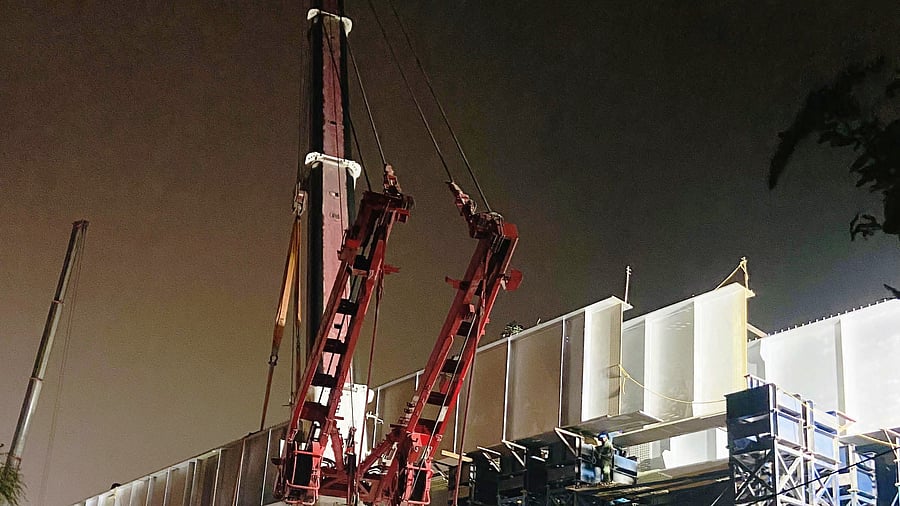
The composite steel girders launched on the railway track in Doddanekundi.
Credit: Special Arrangement
Bengaluru: Namma Metro erected four composite steel girders over the railway track (Salem Bridge) between the Isro and Doddanekundi metro stations in southeastern Bengaluru.
The complex operation has been described as a "critical milestone" for the under-construction Phase 2A (Silk Board-KR Pura).
Nearly 70 people toiled to erect the first 36-metre girder on January 27, two girders on January 28 and the fourth one on January 29, according to Bangalore Metro Rail Corporation Limited (BMRCL).
The girders, each 3.4 metres deep, were erected to lay a 65-metre, 575 MT span (distance between two metro pillars).
The BMRCL said it had taken the approval of the Commissioner of Metro Rail Safety (CMRS), Southern Circle, before starting the work.
According to the BMRCL, launching the composite girder at this location was challenging because there is no service road, and the railway underpass has a restricted opening. The road is a skew crossing the railway track, which further restricted crane operation.
In addition, the composite girder had to be aligned and joined with the existing 14.5-metre girder at a height of 14-15 metres.
While passenger train services were stopped on the Bengaluru-Salem railway line from 11.30 pm to 3.30 am, road traffic was blocked on the Outer Ring Road towards KR Puram from 9 pm to 6 am. Traffic was diverted on the other lane towards Silk Board Junction by bifurcating the road with temporary barricades.
In normal conditions, 400-500 MT cranes are deployed to block main roads and divert traffic. But in this case, with only one side of the road to be blocked, authorities used a single 700 MT crane to launch the girders.
The BMRCL has mostly used 28-metre U-girders for Phases 2A and 2B, while longer composite girders have been deployed at major traffic junctions, flyovers and railway crossings.
The BMRCL said it would complete the rest of the work — erection of the remaining 14.5-metre girder, deck slab, parapet, etc — in two months and remove obstruction on the road.
